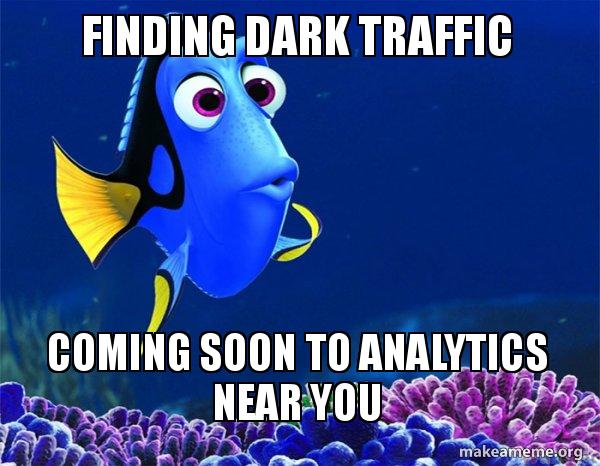When traffic is misattributed within Google
Analytics, it results in what is known as “dark
traffic.” This happens when website visits either fail to pass
referral information, or when the referral information is mislabeled. The
problem with dark traffic is that it prevents webmasters and site owners from
understanding where their traffic is coming from. Most marketers use this
referrer data to shape their strategies based on how well specific channels are
performing. Without knowing where you’re traffic is coming from, it’s difficult
to effectively optimize your individual channels.
Google Analytics has redefined their
acquisition channels several times over the years. Currently acquisition is
broken down into five separate segments: direct, organic, social, referral, and
paid. Here is how each channel is defined:
Direct – when a visitor types in your web address
directly into their browser.
Organic
– when a visitor clicks on a non-paid result in search engines.
Social
– when a visitor clicks on a link to your site from a social media
site.
Referral
– when a visitor clicks on a link to your site from an external
website.
Paid
– when a visitor clicks on a paid ad.
Google Analytics records the referral path for
each visit and buckets users accordingly. Website owners can access this
information in the ‘Acquisition’ tab of their Google Analytics user dashboard.
From there, they can drill down to see additional referral data related to that
specific segment.
Where does dark traffic come from?
Exactly! But no, seriously… The web today has
become much more nuanced, and the technology in place to help us track user
behavioral patterns is struggling to keep up. When you factor in mobile, social
media, messaging apps, email, and bookmarking sites, the list of possibilities
seems endless. In most cases, when you hear SEOs and online marketers talk about
dark traffic, they’re referring to organic and/or social traffic that’s being
marked as ‘direct.’ The reason this traffic is typically mislabeled as ‘direct’
is because most analytics platforms default to the ‘direct’ bucket when urls
are missing proper referrer strings.
Direct
traffic varies depending on the size and popularity of
the brand. If you have a very small percentage of direct traffic, you may want
to consider upping your branding efforts. However, if you’re seeing an
unusually high percentage of direct traffic, then you may have a dark traffic
problem.
Finding the source of dark traffic
You may not be able to magically reveal
the sources of your dark traffic, but there are things you can do on the
reporting side to give you some ideas as to where these visits might be coming
from. It’s actually easier than you might think.
Step
1 – If you notice a sharp decline in organic traffic, the first step is
determining if the traffic is being misattributed, or if the decline is due to
other reasons, such as a sudden drop in rankings or organic visibility. If you
haven’t been tracking your rankings, you could look at Search Console to see if
impressions and/or click activity correlate with the drop in traffic.
Step
2 – Once you rule out some of these other factors, you should take a
deeper look at the urls within your direct traffic segment. This segment can be
found within the ‘Acquisition’ tab. From there, you can exclude your homepage,
and any other urls that users would likely navigate to directly. For
most sites, this is a fairly short list. It’s safe to assume that most (if
not all) remaining urls are dark traffic.
Step
3 – Once you identify your dark traffic, you can infer the source based
on the specific urls. For instance, if blog post urls show traffic patterns
that correlate with the dates/times that they were shared on social media,
chances are that these visits were coming from social media apps. If the
traffic correlates with an email blast you deployed recently, then the visits
most likely came from email.
Dark traffic isn’t as scary as it sounds
Dark traffic isn’t necessarily a bad thing. In
fact, there is plenty of dark traffic that results in conversions and sales.
The main issue with dark traffic is that it makes it more difficult for
marketers to see how their campaigns are performing independently. Now with
emerging search products like Amazon Echo and Google Assistant, we can expect
traffic attribution to become a much more complicated issue, making it more
important than ever to ensure that all referrer data is as accurate as
possible.
Subscribe to the blog to know more about the digital marketing tips. Follow our Blog to Get update from the SEO Expert in Indore. We are the best online marketing company in indore & India. If you need any help just Ping me here or email @ sourabhnagori@live.in. If you want to become a GUEST BLOGGER for my blog www.seo-smo-indore.blogspot.in. Mail your work sample.







No comments:
Post a Comment